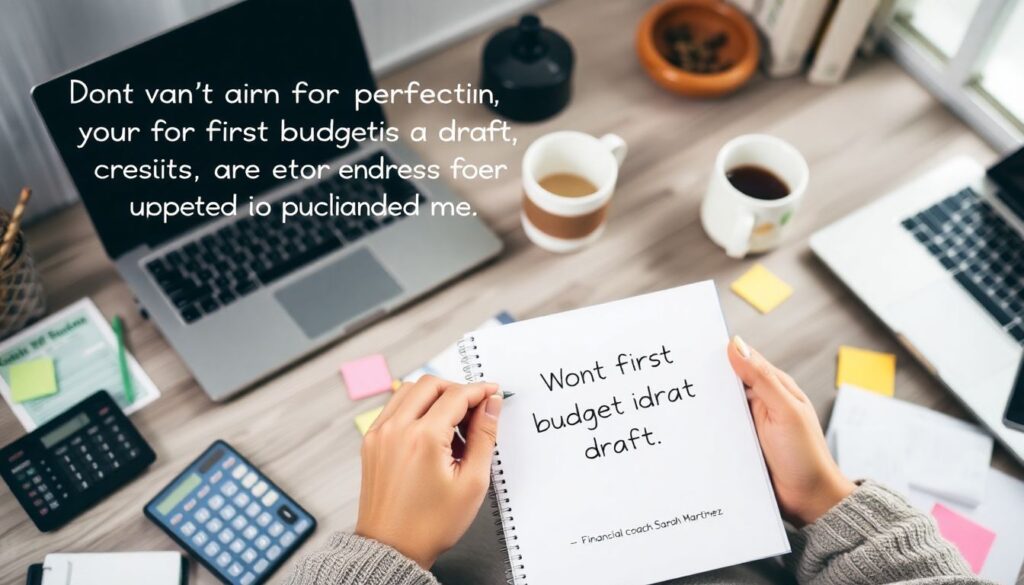Why Budgeting Matters More Than You Think
Let’s be real — budgeting doesn’t sound thrilling. But if you’re tired of wondering where your money went at the end of the month, then creating your first official budget is a game-changer. It’s not about restricting your lifestyle, it’s about taking control. Think of it as a blueprint for your financial future — one that helps you make smarter choices without the stress.
Step 1: Understand Your Income — Every Single Source

Before you start planning, you need to know exactly how much money you have coming in. That means more than just your paycheck. Include:
- Freelance income
- Side hustles (like rideshare driving or selling on Etsy)
- Government benefits or support
- Any passive income (dividends, rental income, etc.)
If your income varies month-to-month, take an average of the last 3–6 months to get a realistic number.
Step 2: Track Where Your Money Is Going

This is where most people get surprised. You might think you spend $100 a month on eating out — until you check your bank statement and realize it’s closer to $300. Tracking your expenses for at least one full month gives you a clear picture of your spending habits.
Break your expenses into categories:
- Fixed (rent, insurance, subscriptions)
- Variable (groceries, gas, utilities)
- Discretionary (dining out, entertainment, shopping)
Use apps like Mint, YNAB (You Need A Budget), or even a simple spreadsheet to stay organized.
Step 3: Set Your Financial Goals
Budgeting without goals is like driving without a destination. Ask yourself: what do I want my money to do for me?
Examples of beginner-friendly goals:
- Build a $1,000 emergency fund
- Pay off one credit card
- Save for a vacation in six months
Once you have clear goals, your budget becomes a tool to help you get there — not just a list of restrictions.
Step 4: Choose a Budgeting Method That Fits You
There’s no one-size-fits-all budget. Here are three popular methods to consider:
- 50/30/20 Rule: Allocate 50% of income to needs, 30% to wants, and 20% to savings and debt repayment.
- Zero-Based Budget: Every dollar has a job. Income minus expenses equals zero.
- Envelope System: Use cash in categorized envelopes (or digital equivalents) to limit spending.
Pick one that matches your lifestyle and personality. If you’re visual and hands-on, the envelope system might work best. Prefer automation? Try the 50/30/20 rule.
Step 5: Build Your First Budget — And Make It Realistic
Now that you know your income, expenses, and goals, it’s time to put it all together. Start by listing your take-home income, then subtract your fixed and variable expenses. Whatever is left should go toward your goals (savings, debt, etc.).
Expert tip:

> “Don’t aim for perfection. Your first budget is a draft. Expect to adjust it as you learn more about your habits,” says financial coach Sarah Martinez.
And she’s right — your budget isn’t set in stone. It’s a living document that evolves with your life.
Step 6: Review and Adjust Monthly
This step is crucial. Set a reminder to review your budget at the end of each month. Ask yourself:
- Did I stick to my spending plan?
- Were there any unexpected expenses?
- Can I increase my savings or debt payments next month?
Adjust your budget based on what you learn. Over time, this habit will make your finances more resilient and predictable.
Common Mistakes Beginners Make (And How to Avoid Them)
Even with the best intentions, it’s easy to slip. Here’s what to watch out for:
- Forgetting irregular expenses — like annual subscriptions or holiday gifts. Add a “miscellaneous” buffer to your budget.
- Being too strict — if your budget feels like punishment, you won’t stick with it. Leave room for fun money.
- Not involving your partner — if you share finances, budgeting has to be a team effort.
Final Thoughts: Your Budget Is Your Power Tool
Creating your first official budget isn’t about cutting back — it’s about moving forward. You’re not just tracking dollars; you’re building a foundation for bigger things: freedom, security, and peace of mind. Start simple, stay consistent, and don’t be afraid to tweak as you go.
Remember, the goal isn’t perfection — it’s progress.

